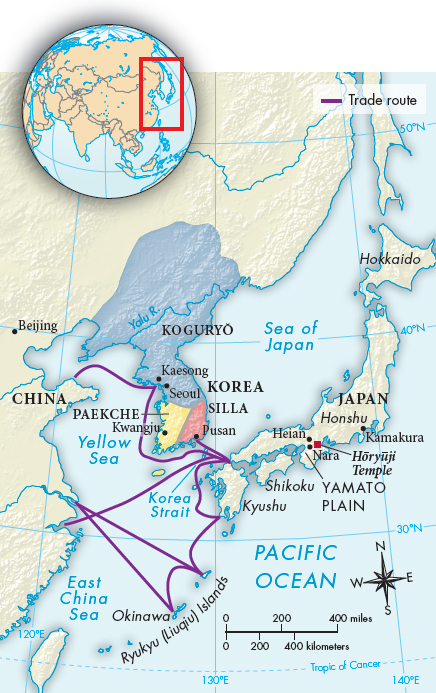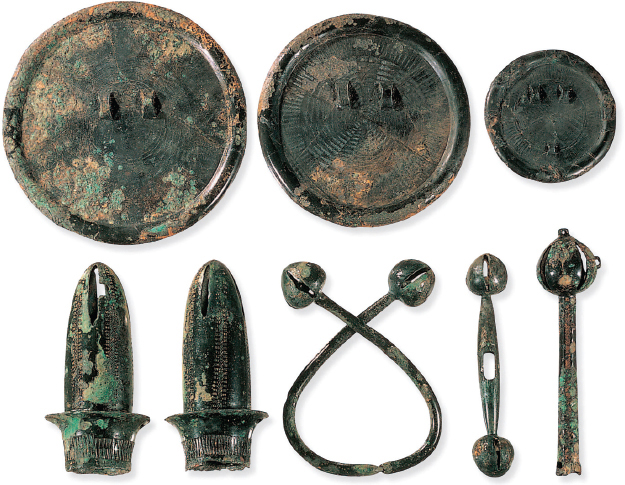Korea

Korea is a mountainous peninsula some 600 miles long extending south from Manchuria and Siberia (Map 7.3). Archaeological, linguistic, and anthropological evidence indicates that the Korean people share a common ethnic origin with other peoples of North Asia, including those of Manchuria, Siberia, and Japan. Linguistically, Korean is not related to Chinese.
Korea began adopting elements of technology from China in the first millennium B.C.E., including bronze and iron technology. Chinese-
The impact of the Chinese prefectures in Korea was similar to that of the contemporaneous Roman colonies in Britain in encouraging the spread of culture and political forms. The prefectures survived not only through the Han Dynasty, but also for nearly a century after the fall of the dynasty, until 313 C.E. The Chinese never controlled the entire Korean peninsula, however. The Han commanderies coexisted with the native Korean kingdom of Koguryŏ, founded in the first century B.C.E. After the Chinese colonies were finally overthrown, the kingdoms of Paekche and Silla emerged farther south on the peninsula in the third and fourth centuries C.E., leading to what is called the Three Kingdoms Period (313–
Buddhism was officially introduced in Koguryŏ from China in 372 and in the other states not long after. Buddhism connected Korea to societies across Asia. Buddhist monks went back and forth between China and Korea.
When the Sui Dynasty finally reunified China in 589, it tried, unsuccessfully, to establish control of at least a part of Korea. The Tang government then tried allying itself with one state, Silla, to fight the others. Silla and Tang jointly destroyed Paekche in 660 and Koguryŏ in 668. With its new resources Silla was able to repel Tang efforts to make Korea a colony but agreed to vassal status. The unification under Silla marked the first political unification of Korea. For the next century Silla embarked on a policy of wholesale borrowing of Chinese culture and institutions.
